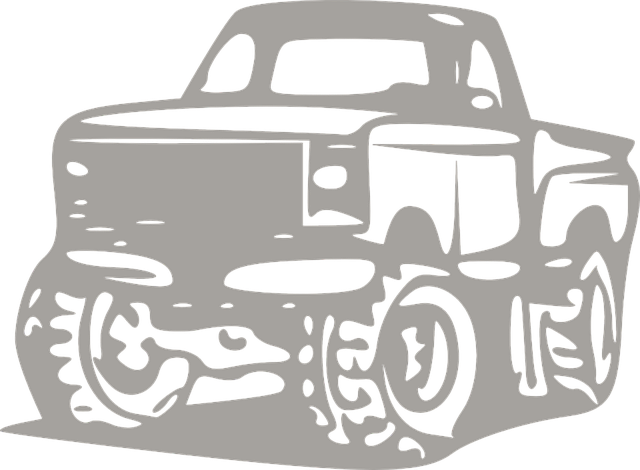Hitch balls are crucial components for RV-4×4 vehicles, enabling safe and efficient towing of trailers or gear over rough terrain. They come in two types: standard round (light-duty) and high-strength square (heavy-duty). Regular inspection is vital to prevent accidents, with owners checking for wear, corrosion, and damage. This guide offers a straightforward process for replacing damaged hitch balls, emphasizing safety precautions during RV-4×4 repairs, while regular maintenance ensures optimal performance and longevity.
“Enhance your RGV-4×4’s towing capabilities with our comprehensive guide on hitch balls. This essential component, designed for secure trailer attachment, plays a pivotal role in off-road adventures and everyday hauling. From understanding its purpose to ensuring optimal performance, we cover it all. Discover the different types of hitch balls suitable for RGV-4×4 repairs, learn to diagnose common issues, master replacement procedures, and maintain your system for longevity. Get ready to navigate with confidence.”
- Understanding Hitch Balls: Definition and Purpose in RGV-4×4 Vehicles
- Types of Hitch Balls Used in RGV-4×4 Repair
- Common Issues with Hitch Balls and Diagnosing Problems
- Step-by-Step Guide to Replacing a Damaged Hitch Ball
- Maintaining Hitch Balls for Optimal Performance and Longevity
Understanding Hitch Balls: Definition and Purpose in RGV-4×4 Vehicles

Hitch balls, also known as trailer hitches or towing components, play a vital role in RGV-4×4 vehicles designed for rugged terrain and off-road adventures. These mechanical fittings are strategically located on the rear of the vehicle, enabling the attachment of trailers, wagons, or other towing equipment. The primary purpose of hitch balls is to facilitate heavy-duty towing, allowing owners to transport additional cargo or specialized gear behind their RGV-4x4s.
When it comes to RGV-4×4 repairs, understanding the function and correct usage of hitch balls is essential. Proper installation and maintenance ensure safe and efficient towing capabilities. Regular inspection of hitch balls, including their mounting hardware and safety pins, is crucial to prevent accidents and ensure the integrity of the vehicle’s towing system.
Types of Hitch Balls Used in RGV-4×4 Repair

When it comes to RGV-4×4 repair, the choice of hitch balls is crucial for ensuring seamless towing and hauling capabilities. There are primarily two types commonly used in this context: the round, or standard, hitch ball and the square, or high-strength, hitch ball. The former is a classic, known for its simplicity and affordability, making it suitable for light-duty applications such as connecting a trailer to a small SUV or pickup truck for occasional use.
On the other hand, square hitch balls are designed with heavy-duty tasks in mind. They offer superior strength and stability, making them ideal for RGV-4×4 repairs where vehicles are subjected to intense towing demands. These balls feature a robust construction that can withstand extreme weights, which is essential when hauling larger trailers or specialized equipment. Their versatile design also allows for various ball sizes and shank lengths, catering to different vehicle models and towing needs in the RGV-4×4 repair sector.
Common Issues with Hitch Balls and Diagnosing Problems

Hitch balls, while essential for RV-4×4 repairs and towing, often face common issues that can compromise their functionality. One of the most frequent problems is wear and tear, especially at the point of attachment to the vehicle. This can lead to loose connections, affecting the overall stability during towing. Another issue is corrosion, which can occur over time, particularly in regions with high moisture content, causing rust buildup and potentially damaging the hitch ball or the trailer coupling.
Diagnosing these problems involves regular visual inspections. Look for signs of wear, such as excessive play or damage to the ball’s surface. Corrosion might appear as flaky or porous metal, often accompanied by a distinct odour. If any issues are identified, it’s crucial to address them promptly through appropriate repairs or replacements, ensuring a secure and safe towing experience. RGV-4×4 owners should keep an eye on these details during maintenance checks to avoid unexpected failures while on the road.
Step-by-Step Guide to Replacing a Damaged Hitch Ball

Replacing a damaged hitch ball is a relatively straightforward process, especially if you’re familiar with basic vehicle maintenance. Here’s a step-by-step guide tailored for RGV 4×4 owners looking into an RGV-4×4-repair:
1. Safety First: Ensure your vehicle is parked on a level surface and apply the parking brake. Turn off the engine and engage the gear into “Park.” Safety chains or wheel chocks are recommended to prevent any accidental rolling.
2. Locate the Hitch Ball: The hitch ball is typically located at the rear of your RGV 4×4, connected to the vehicle’s frame. Check your owner’s manual for exact placement if needed.
3. Remove the Old Hitch Ball: Using a jack and jack stands, lift your RGV 4×4 high enough to clear the ground. Once secured, carefully remove the existing hitch ball by loosening the retaining bolts with a wrench or socket set. These bolts can be tight, so apply considerable force if necessary, but be mindful not to strip them.
4. Clean and Inspect: Before installing a new hitch ball, clean the mounting area thoroughly to ensure optimal adhesion for the replacement. Inspect the frame for any signs of damage or wear that might have contributed to the original hitch ball’s failure.
5. Install the New Hitch Ball: Position the new hitch ball in place, ensuring it aligns correctly with the mounting holes. Secure it tightly using the retaining bolts, torquing them according to your vehicle’s specifications (check your owner’s manual for the correct torque value).
6. Lower and Test: Once the new hitch ball is securely fastened, carefully lower your RGV 4×4 back to the ground and remove the jack stands. Test the hitch ball’s functionality by attaching a trailer or load to ensure it operates smoothly and securely.
Maintaining Hitch Balls for Optimal Performance and Longevity

Regular maintenance is key to keeping hitch balls in optimal condition for both performance and longevity, especially for those frequently utilizing their vehicles for rugged RGV-4×4 repairs or off-road adventures. Start by inspecting the balls regularly for any signs of wear, corrosion, or damage. Even minor cracks or dents can compromise their structural integrity, so immediate attention is crucial. Cleaning is another vital step; use a mild detergent and warm water to remove dirt and grime buildup, ensuring all surfaces are free from contaminants that could affect grip and stability when hitched to trailers or other equipment.
After cleaning, apply a generous layer of high-quality lubricant to the ball’s surface. This not only reduces friction but also protects against rust formation, especially in harsh weather conditions. Rotate and wiggle the balls occasionally while lubricating for even distribution. For ultimate durability, consider replacing worn-out hitch balls promptly, opting for genuine spare parts if available. These simple maintenance practices will ensure your hitch balls remain reliable partners in all your off-road endeavors, making RGV-4×4 repairs a breeze.
Hitch balls are essential components in RGV-4×4 vehicles, ensuring secure towing and hauling capabilities. By understanding their purpose and various types, you can effectively address common issues through proper diagnosis and replacement techniques. Regular maintenance is key to maximizing the lifespan of hitch balls, ultimately enhancing the overall performance and reliability of your RGV-4×4 repair and operation.
